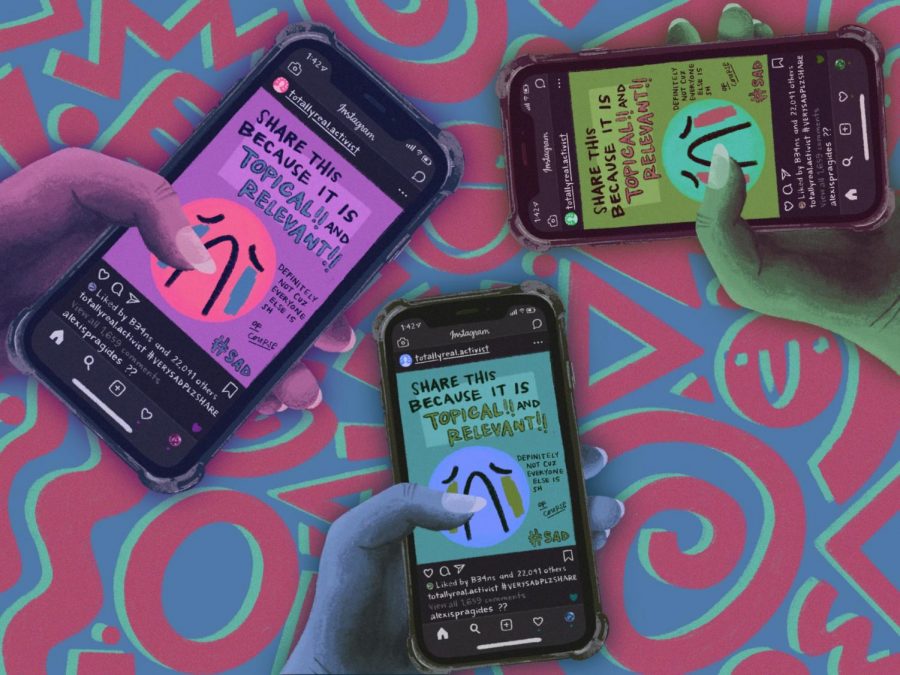Falling asleep or staying ‘woke?’: Performative activism on Instagram
On social media platforms such as Instagram, activism can spread quickly and easily through resharing and hashtags.
Following the deaths of George Floyd and Breonna Taylor, the Black Lives Matter movement has been at the forefront of activism across all age groups. Particularly among the younger generations, a new kind of activism is being embraced on social media with the making of posts centered around social issues. I believe it’s great so many people want to educate themselves and others, I can’t help but to wonder: Is this just for show?
In other words, is activism on the platform just performative?
The majority of these posts originate from accounts that exclusively report about activism. These accounts use eye catching graphics, pretty colors and easy to read wording in order to entice people to read them. And it works.
Along with myself, a lot of people I follow reshare these posts trying to get our messages out there. In the end, we all have good intentions with what we share on our Instagram stories. But there are many memorable trends on the app that had the best of intentions but ended with lackluster results and didn’t further the cause.
One example is the Blackout Tuesday collective effort in which masses of social media users vowed to have a day of silence on social media to protest racism and police brutality by posting an image of a single black square. Other examples of this type of trend are the chain messages seen on Instagram stories saying, “Share if you support this” or “Send this to 10 people who would support that.” Yeah… those.
While these actions are well intentioned, they don’t necessarily do much help. Many people simply post these in order to look politically aware online in an act of bandwagoning on what they view to simply be a trend. It may feel honorable in the moment, but most people forget about it hours later.
You could say the black square posts were so widespread that it increased awareness about the Black Lives Matter movement, but that’s all it really did. It was simplistic, and it took little to no effort. Posting a single, little black square on one day in June did little to help the actual movement.
The same goes for the chain posts, which almost act as a way to guilt trip people into posting about certain issues, otherwise they seem like a bad person. Since when is tagging ten of your best friends on your story synonymous with showing support for a movement?
These are empty displays of performative activism. There’s little to no information being spread about the issue besides a hashtag. Many of these posts are made without much thought and certainly without the means to make a change.
If you truly want to add to the cause, one of the easiest and most effective ways to spread awareness online is through sharing links to other sources of media, petitions or Carrds , which can hold all of these within one web page.
Sharing helpful information is arguably the fastest way to spread information, but some people forget to apply their activism to real life. As in, going to organized events like rallies or protests, educating family or friends even if it sparks a difficult conversation and calling officials to ask for change and listening to those facing the issues head-on.
It’s inspiring to open up Instagram and see so many people outspoken with their views on issues important to them, but they can do better. Activism goes beyond the screen of your phone. It is so much more than a hashtag or a picture on your phone; people need to stop giving social media lip service and start making changes.


